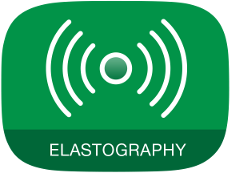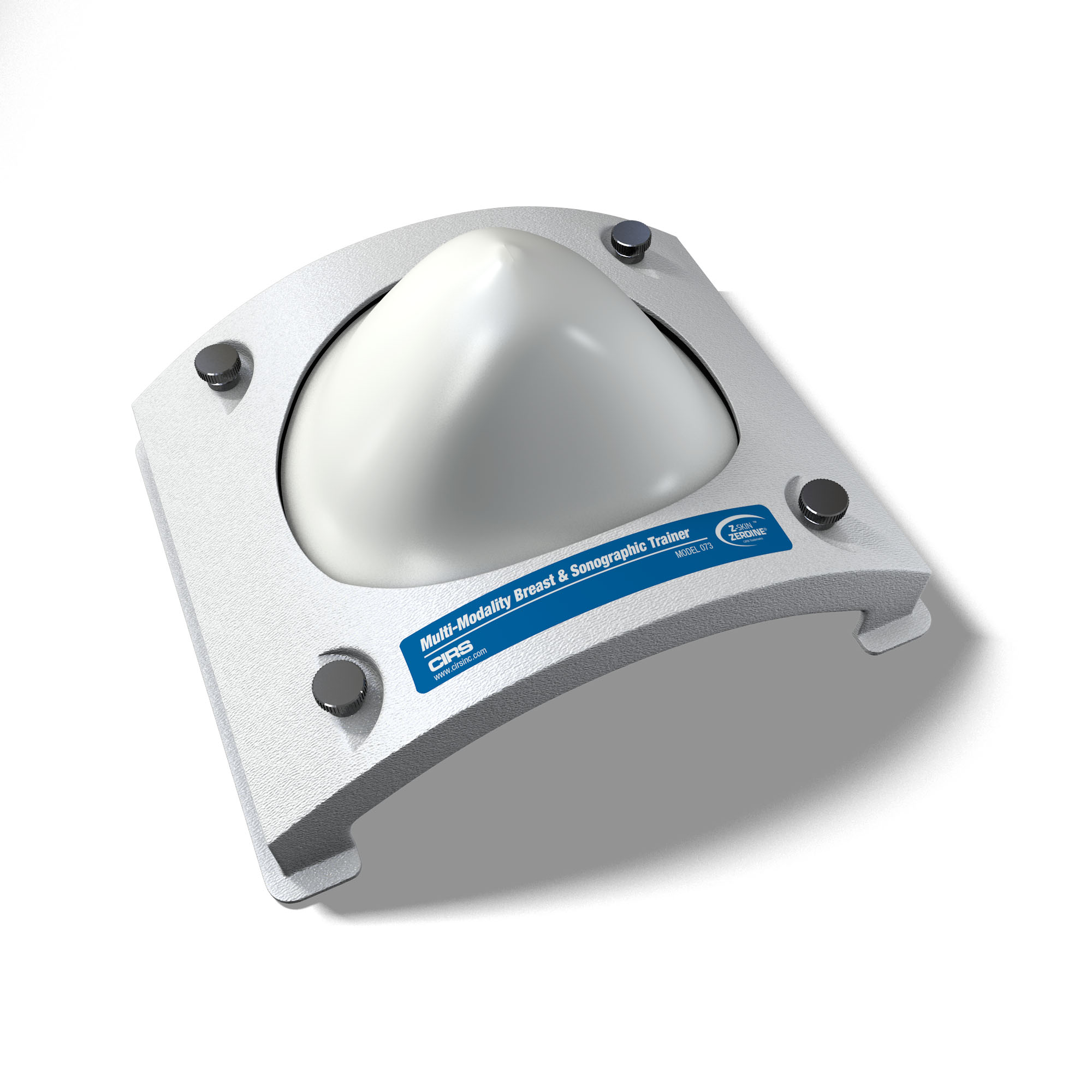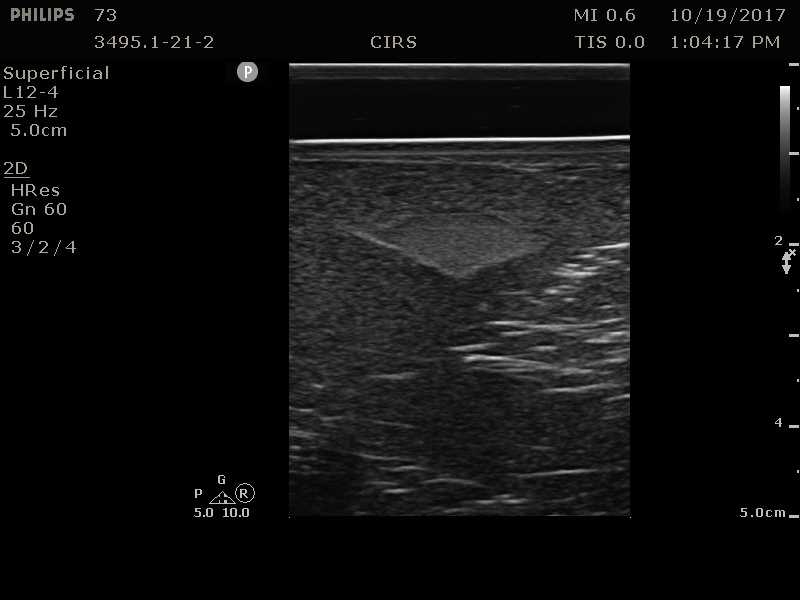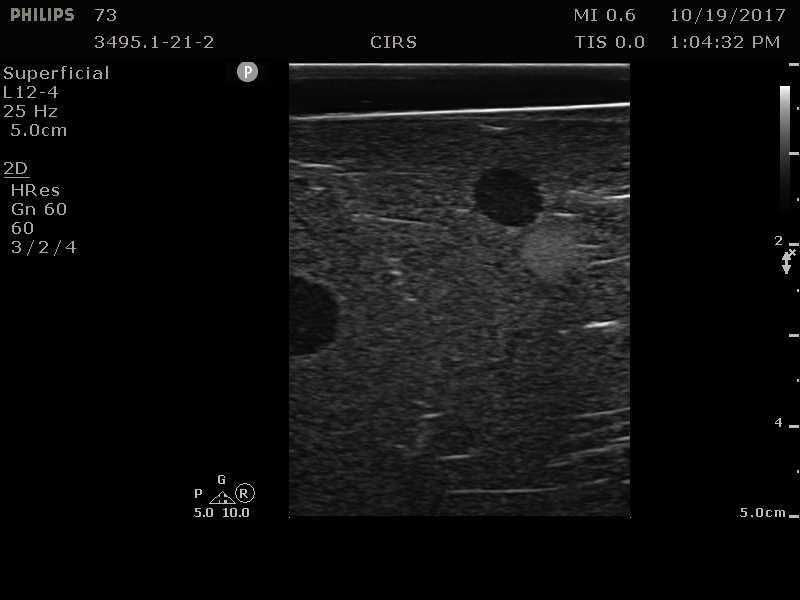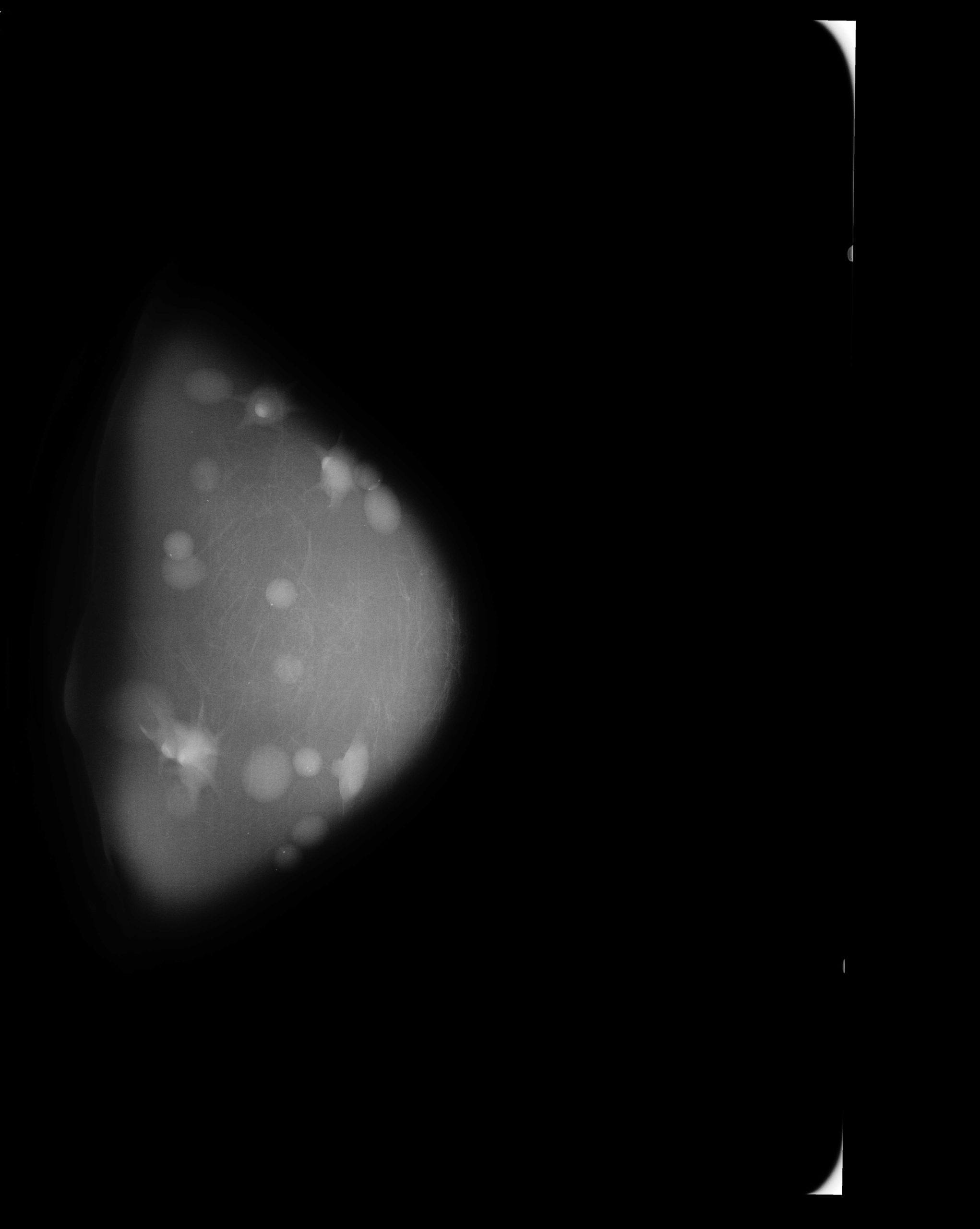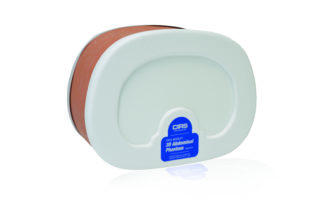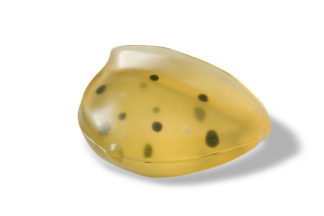DURABLE TRAINING PHANTOM FOR ULTRASOUND, MAMMOGRAPHY, X-RAY AND MRI
A Versatile Tool for Shaping Best Practices
The CIRS Multi-Modality Breast Biopsy and Sonographic Trainer is designed to train users in various aspects of breast imaging and image-guided interventional procedures. Accurately mimicking the heterogeneous appearance of breast tissue under ultrasound, mammography, and MRI, the phantom features embedded cystic and dense lesions. Half of the phantom’s dense lesions have a spiculated shape, while the remaining are spherically shaped – with a 100-300 micron microcalcification embedded within. In addition to helping users identify different types of masses in the complex structure of the breast, the calcifications are useful markers for image registration between modalities.
Featuring Z-Skin™ Membrane
The phantom includes a patent-pending1 Z-Skin™ membrane that simulates the look and feel of skin during scanning and biopsy. The material closes up on itself after puncture with a needle, providing protection from desiccation even after multiple training sessions. The material inside the phantom is formulated to minimize the effect of needle tracks while practicing biopsy techniques. This material also has remarkable self-sealing properties, with tracks typically disappearing within minutes of needle removal. This capability supports re-use, as each mass may be biopsied multiple times.
Features:
- Heterogeneous tissue to simulate imaging of human breast
- Encased in flexible membrane for increased durability
- Self-sealing material for extended phantom use
- Cystic, dense, high stiffness and attenuative masses for biopsy training


